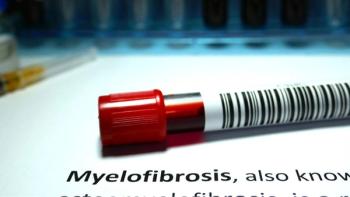
At-Home Urine Test Could Replace Pap Smear for Cervical Pre-Cancer Screening
Results from a new study suggest there may be a simpler, cheaper, more accessible way to screen for cervical pre-cancer.
A new non-invasive, at-home urine test and vaginal swab could soon replace the pap smear as the gold standard for detecting cervical pre-cancer, according to new study results presented at the National Cancer Research Institute’s (NCRI) 2019 Cancer Conference in Glasgow, UK.
Potential Benefits of Self-Administered Cervical Pre-Cancer Testing
The so-called Colli-Pee urine test and self-sampling device boast several potential benefits over current methods, according to study authors led by Dr Belinda Nedjai, senior fellow and director of the Molecular Epidemiology Lab at Queen Mary University of London.First, the test empowers women to avoid time-consuming visits to the clinic, which could help increase screening rates among women who cannot attend, or choose not to attend, screening appointments. Study results indicated that women preferred doing a test at home over a clinical appointment, Nedjai said.
Second, the process of collecting self-administered urine and vaginal sample tests is more streamlined than current methods, which typically begins when a patient tests positive for human papilloma virus (HPV). From there, the patient is expected to attend a follow up visit to the clinic which includes a pap smear.
HPV testing is rapidly becoming the primary screening method for cervical cancer worldwide because it is a very sensitive method, and effective in detecting true positives. But this testing method “lacks specificity,” according to Nedjai. “In other words, a second test is needed to exclude HPV positive women that are not at increased risk of developing cancer. The choice of an appropriate strategy for high-risk HPV positive women is a key issue.”
Finally, Nedjai explained that she expects the self-sampling tests to improve acceptance rates for cervical cancer screening, as well as reduce costs to health services and improve the performance of screening programs.
What the Science Tells Us
These benefits could have a huge impact for patients — cervical cancer is the fourth most frequently occurring cancer in women across the globe, with 570,000 new cases and 310,000 deaths from the disease in 2018.To conduct the study, Nedjai and colleagues collected and extracted DNA from self-administered urine samples from 503 women using the Colli-Pee device and vaginal samples from 600 women who either used Flocked swab and Diagene or HerSwab and Qvintip.
The tests measured DNA methylation—a chemical change to one of the four base letters (ACT&G) in our DNA that make up the human genetic code—and tested a methylation classifier called S5, which looks at DNA methylation of the four HPV types most strongly associated with cancer (HPV16, HPV18, HPV31 and HPV33) as well as the human gene EPB41L3 in order to produce a score that indicates the patient’s overall risk of getting a pre-cancer lesion. The investigators had discovered though previous research that when S5 was used on cervical samples, it was 100% accurate at detecting invasive cervical cancer and 93% accurate in detecting pre-cancer in women who had an HPV positive test.
Cervical cancer is preceded by the abnormal growth of precursor cells on the surface of the cervix—so-called cervical intraepithelial neoplasia (CIN) or pre-cancer—that can develop into cervical cancer. The disease is divided into three stages (CIN1, CIN2 and CIN3), with the likelihood of cells developing into cancer increasing at each stage.
What’s Next?
“We found that S5 classifier with or without HPV testing worked well in both urine and vaginal samples. It distinguished between women who had no pre-cancerous lesions and those who had CIN3 or higher lesions...Urine performed as well as self-collected vaginal samples,” Nedjai said. “We are currently working on new markers to try to improve the accuracy of the classifier even further, but these findings represent an advance in cervical cancer screening, especially for women who do not attend the clinic.”According to Dr Manuel Rodriguez-Justo, a consultant pathologist at University College London, the new testing method “has the potential to revolutionize the way a positive HPV test is followed up, as well as making it easier for women in countries with no cervical cancer screening programs to be tested.”
Results of this study still need to be validated by other groups. If they are, the implementation of urine-based testing and self-sampled vaginal samples could potentially increase screening uptake and reduced cost for health system screening programs, all while offering women a much more convenient way to monitor their health in the privacy of their own homes.
“The initial use of self-sampling is likely to be for women who do not attend clinical after a screening invitation and countries without cervical cancer screening programs,” Nedjai said. “In the longer term, self-sampling could become the standard method for all screening tests.”
Follow




